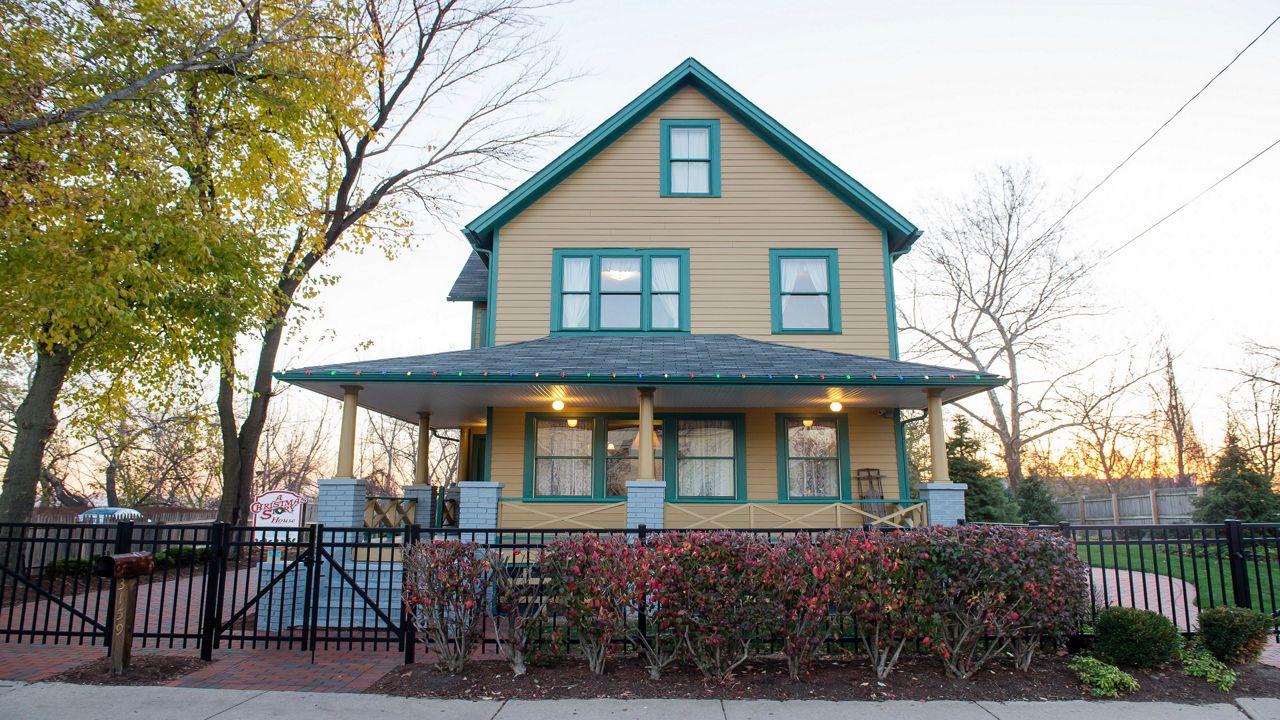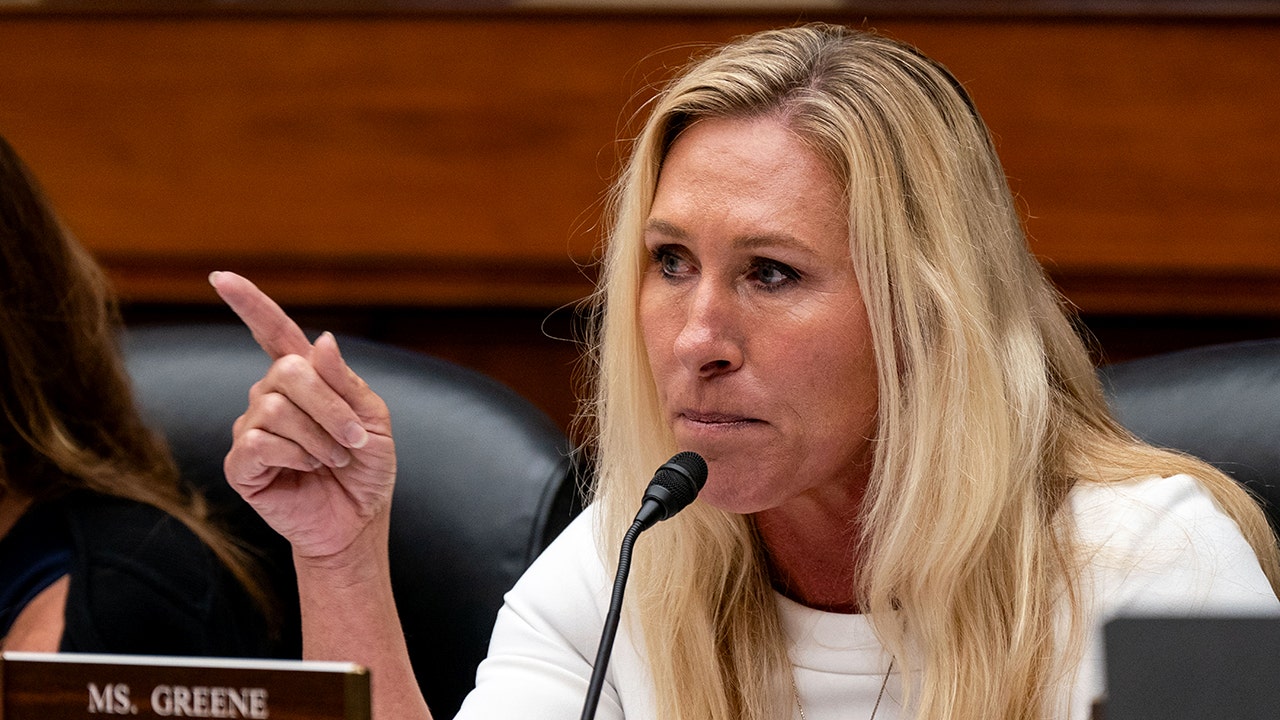World
South Africa raises interest rates to 14-year high
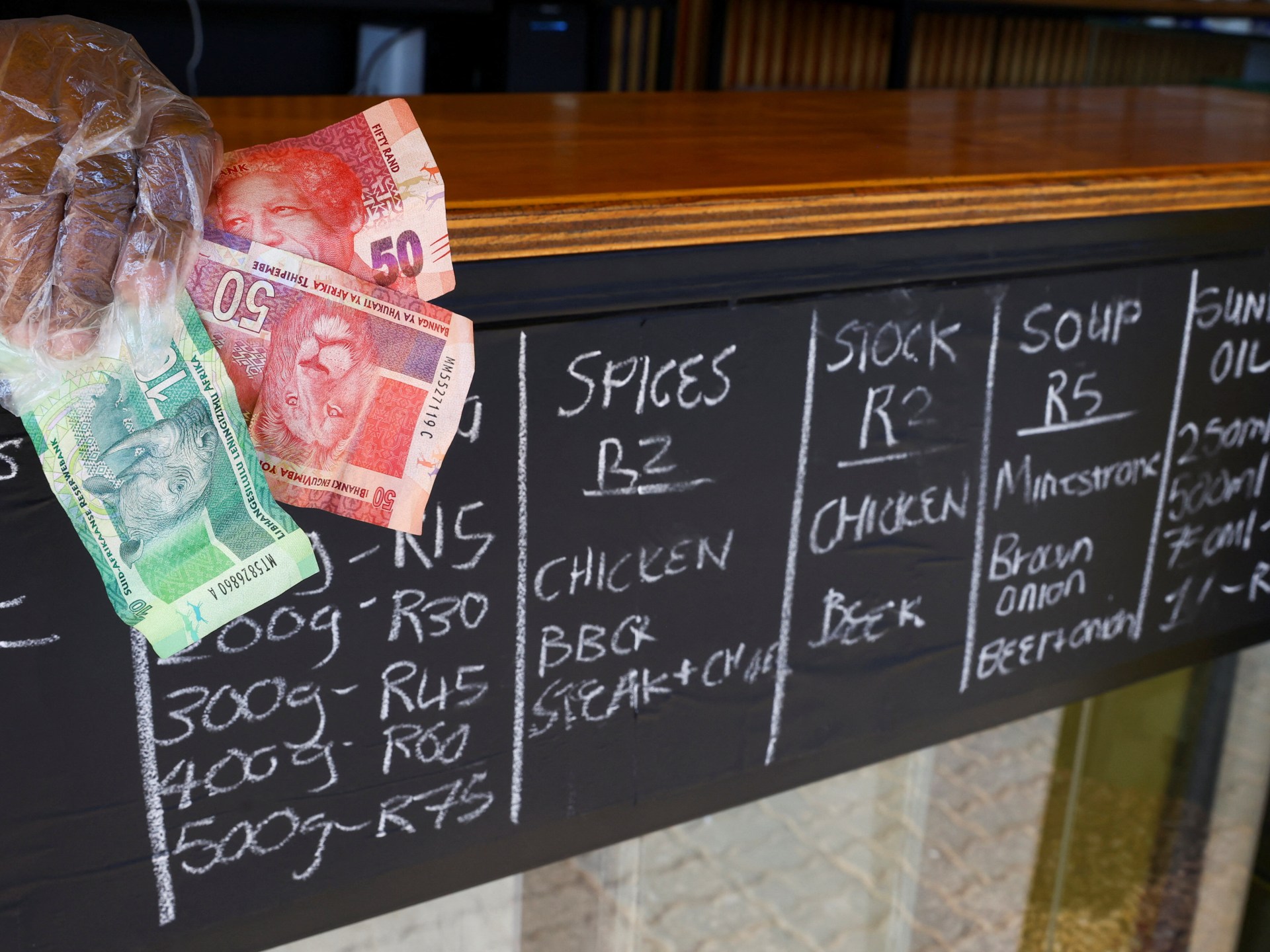
Central bank decides on 10th straight hike as it raises its inflation forecast for the year and blackouts plague country.
South Africa’s central bank has raised its benchmark interest rate to a 14-year high and revised up its inflation forecast for this year.
The bank on Thursday lifted the rate by half a percentage point to 8.25 percent in what it said was a unanimous decision by its monetary policy committee. It was the 10th consecutive hike by the South African Reserve Bank.
Governor Lesetja Kganyago said the decision was aimed at increasing confidence that inflation could be reined in “sustainably over time”.
South Africa’s monetary policymakers started raising rates in November 2021 and decided on their steepest hike in a decade – 0.75 percentage points – in July.
The rand dropped to record lows after the announcement and was trading at 19.74 against the dollar at 15:27 GMT, two hours after the rate announcement.
The latest hike was higher than some analysts’ expectations, but South Africa has faced persistent price pressures.
“Given upside inflation risks, larger domestic and external financing needs and load-shedding, further currency weakness appears likely,” Kganyago said.
South Africa has been battered by record blackouts – known as load-shedding – that have hampered economic activity over the past year as problems at its beleaguered power utility Eskom have mounted.
The outages are costing more than $50m in lost output each day, according to estimates by the energy minister.
“While the prevailing local supply-side issues around energy and logistics are not considered to be within the ambit of monetary policy, they do adversely impact inflation and demand by lifting the cost of living and operations,” said Mamello Matikinca-Ngwenya, chief economist at South African bank FNB.
Inflation dropped to its lowest level in almost a year in April, slowing to 6.8 percent from 7.1 percent in March. Yet, food prices remain stubbornly high, having experienced record increases over the past 12 months.
On Thursday, the central bank said it expected inflation to average 6.2 percent this year, 0.2 percentage points higher than earlier forecasts.
“With core goods and food higher in the near term, headline inflation for 2023 is revised up,” Kganyago said. “Headline inflation for 2024 also increases to 5.1 percent.”
Policymakers around the world are battling elevated inflation caused largely by surging energy and food prices following Russia’s invasion of Ukraine.

World
Consejos para disfrutar de las celebraciones de fin de año, sin estrés
NUEVA YORK (AP) — Todos conocemos los factores de estrés: obligaciones sociales, rencillas familiares, divisiones políticas, estrés financiero y el deseo de mantenerse alegre y generoso todo el tiempo.
Así que aquí va un recordatorio sobre cómo desterrar a tu perfeccionista interior y disfrutar verdaderamente de la temporada festiva:
“Realmente ayuda dejar de lado algunos de los ‘deberías’”, dice Lynn F. Bufka, jefa de práctica de la Asociación Estadounidense de Psicología. “Decide cuál es la cosa que más importa, y las cosas que te brindan más alegría, y suelta las demás”.
Las tradiciones pueden cambiar y evolucionar, y cuanto más flexibles sean las cosas, más fácil será para todos, dice Bufka.
“Concentra tu energía en crear un espacio cálido para que las personas que amas se reúnan y relajen, se pongan al día y celebren unos a otros. Eso es literalmente todo lo que importa”, concuerda Lauren Iannotti, editora en jefe de Real Simple.
Algunos consejos:
Concéntrate en lo que te hace feliz
Podrías decidir que la conversación es tu objetivo principal y no preocuparte en absoluto por la decoración, dice Bufka. O si la decoración de la mesa es lo que amas, invierte tu energía allí y no te preocupes tanto por otros aspectos.
“Idealmente, debería tratarse de enfocarse en el amor, y eso no significa lo mismo para todos”, dice Bufka.
Permite que otros hagan las cosas por ti.
“La gente quiere ayudar, ¡déjalos!”, dice Iannotti. “Si no te ENCANTA cocinar todas esas guarniciones, o tienes poco tiempo, no hay ninguna vergüenza en aceptar que tu hermana haga el relleno. O busca ayuda de los profesionales: apoya a un restaurante local haciendo un pedido de catering”.
Otra opción es que “cada uno traiga un plato distintivo”, dice Ianotti. “Ahorrarás tiempo y dinero en la preparación y la cocina y tus invitados podrán mostrar sus habilidades”.
Darte permiso para tomar atajos
“Está bien si la casa está un poco desordenada o si la cena se sirve unos minutos tarde”, dice Iannotti. “Si las personas que has invitado están más interesadas en evaluar tu desempeño que en pasar un buen rato, pueden discutirlo con su terapeuta”. (Por cierto, no lo están, añade ella).
Y no dudes en dejar que la gente se sirva por sí misma, cuando sea posible. “Si no tienes tiempo para jugar a ser el barman, crea una bebida insignia con anticipación que puedas servir a todos tus invitados. También puedes simplemente dejar algunos mezcladores para que los invitados se sirvan y hagan sus propias creaciones”, sugiere Caroline Utz, directora editorial y de estrategia en The Spruce.
Está bien tener tiempo a solas
Las cosas funcionarán lo suficientemente bien si no lo supervisas todo, así que cuídate. Tómate pausas o caminatas si eso te ayuda a mantenerte centrado.
“Aunque el mindfulness se está convirtiendo en un término demasiado utilizado en la sociedad actual, hay algo valioso que podemos tomar de esto y aplicar a la temporada de fin de año”, dice Brook Choulet, psiquiatra deportiva y de rendimiento de concierge y fundadora de Choulet Performance Psychiatry.
Ella recomienda “programar microdescansos intencionales” para hacer algo que disfrutes.
“Por ejemplo, podrías programar una llamada telefónica con un amigo de otro estado, tomar un paseo de 15 minutos al aire libre, o incluso ajustar el temporizador y tomar un baño de 15 minutos sin interrupciones”, dijo.
Espera algo de discordia y no te alarmes por ello
“Si te preocupa la polarización y entrar en conversaciones incómodas, intenta pensar en maneras en que puedas terminar una conversación o cambiarla de dirección”, dice Bufka.
Ella recomienda preparar algunas frases de antemano para ayudar a terminar la conversación o cambiarla de dirección.
En resumen, tener la intención de una temporada festiva menos perfecta puede ser justo lo que necesitas.
___
Katherine Roth cubre temas de vida y estilo y otros temas para The Associated Press desde Nueva York.
___
Esta historia fue traducida del inglés por un editor de AP con la ayuda de una herramienta de inteligencia artificial generativa.
World
Azerbaijan Airlines plane headed to Russia crashes hundreds of miles off course, dozens feared dead
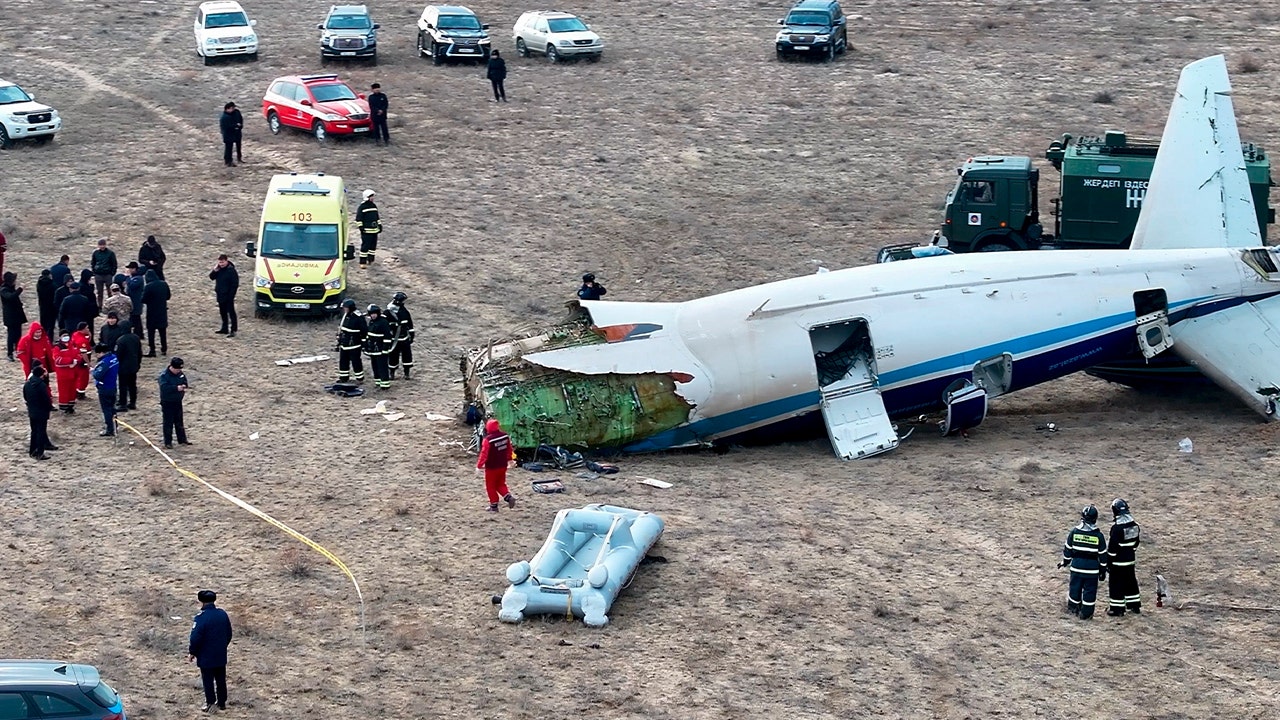
Dozens of passengers are feared dead after an Azerbaijan Airlines flight crashed near the city of Aktau in Kazakhstan on Wednesday, reports say.
The Embraer 190 passenger jet flying from Azerbaijan to Russia had 62 passengers and five crew on board, Kazakh authorities announced, saying 32 survivors had been rescued.
Flight J2-8243 had flown hundreds of miles off its scheduled route to crash on the opposite shore of the Caspian Sea. Officials did not immediately explain why it had crossed the sea, but the crash came shortly after drone strikes hit southern Russia. Drone activity has shut airports in the area in the past and the nearest Russian airport on the plane’s flight path was closed on Wednesday morning.
Russia’s aviation watchdog, meanwhile, said it was an emergency that may have been caused by a bird strike.
MORE THAN 30 DEAD IN BRAZIL BUS AND TRUCK COLLISION
In this photo taken from a video released by the administration of Mangystau region, the wreckage of Azerbaijan Airlines Embraer 190 lies on the ground near the airport of Aktau, Kazakhstan, Wednesday, Dec. 25, 2024. (The Administration of Mangystau Region/AP Photo)
Those aboard the plane included 42 Azerbaijani citizens, 16 Russian nationals, six Kazakhstani and three Kyrgyzstani citizens, according to Kazakhstani officials.
Russian news agency Interfax reported that both pilots died in the crash, citing a preliminary assessment by emergency workers at the scene. The news agency also quoted medical workers who stated that four bodies had been recovered from the crash so far.
A total of 29 survivors, including two children, have been hospitalized, the ministry told Russia’s state news agency, RIA Novosti, the Associated Press reported. Many passengers have yet to be accounted for.
MALAYSIA AGREES TO RESUME ‘NO FIND, NO FEE’ HUNT FOR FLIGHT MH370, 10 YEARS AFTER PLANE DISAPPEARED
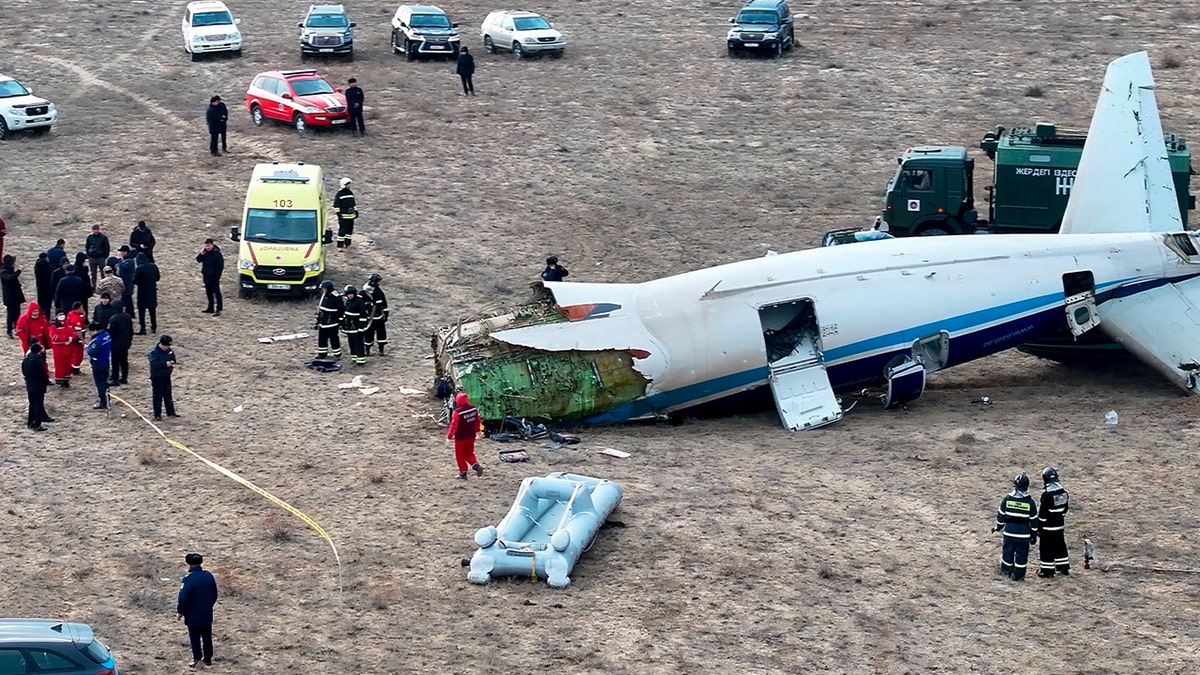
More than 30 are feared dead following the crash near the Kazakhstani city of Aktau. (Azamat Sarsenbayev/AP Photo)
Video of the crash showed the plane descending rapidly before bursting into flames as it hit the seashore, and thick black smoke then rising, Reuters reported. Bloodied and bruised passengers could be seen stumbling from a piece of the fuselage that had remained intact.
Azerbaijani President Ilham Aliyev, who had been traveling to Russia, returned to Azerbaijan upon hearing news of the crash, the president’s press service said. Aliyev was due to attend an informal meeting of leaders of the Commonwealth of Independent States, a bloc of former Soviet countries founded after the collapse of the Soviet Union, in St. Petersburg.

Emergency crews at the site of the Azerbaijani airliner crash on Dec. 25, 2024. (Azamat Sarsenbayev/AP Photo)
Aliyev expressed his condolences to the families of the victims in a statement on social media.
“It is with deep sadness that I express my condolences to the families of the victims and wish a speedy recovery to those injured,” he wrote.
He also signed a decree declaring Dec. 26 a day of mourning in Azerbaijan.

The plane was en route from the Azerbaijani capital of Baku to the Russian city of Grozny in the North Caucasus, the Associated Press reports. (The Administration of Mangystau Region/AP Photo)
In a statement, Azerbaijan Airlines said it would keep members of the public updated and changed its social media banners to solid black.
“We ask God for mercy on the passengers and crew members who lost their lives,” a translated statement on X said. “Their pain is our pain. We wish a speedy recovery to those injured.”
Reuters and the Associated Press contributed to this report.
World
Who is Europe's top investor in space in 2023?

Luxembourg remains Europe’s top investor in space in a year when defence spending on space exceeded civil space budgets for the first time since the 1990s.
Global public investment in space hit a record high of €106 billion in 2023, an 11% increase compared to 2022.
In Europe, the total funding was €11.9 billion, showing a modest 1% rise in its share of global space investment.
According to the European Space Agency, defence spending on space exceeded civil space budgets last year for the first time since the 1990s. Defence expenditures in space are projected to grow faster than civil spending, making up 53% of the budget in 2024.
The US continues to dominate global space investment, accounting for 64% of the total budget, while China holds a strong second place, growing its share from an estimated 2% in 2000 to 12% in 2023 through long-term programmes in both civil and defence.
Europe ranks third, contributing 11% of the global space budget in 2023.
What share of their GDP do EU countries spend on public space budgets?
Luxembourg remains Europe’s leading investor in space, dedicating 0.135% of its Gross Domestic Product (GDP) to the sector.
Globally, the country ranks third behind the US (0.262%) and Russia (0.169%).
In Europe, Luxembourg is followed by France, which invests 0.167% of its GDP, Italy at 0.103%, and Belgium at 0.095%.
On the other hand, private investment in space has continued to decline in 2023, dropping by 32% compared to 2022.
Europe also saw a 14% decrease in 2023 compared to the year before, with private space ventures receiving just below €980 million.
Although the US accounts for most of the global decline in 2023, its space sector continues to attract the largest share of investments at 60%, followed by Europe with 16% and China with 9%.
What was the state of space activity in 2023?
There were 221 orbital launches in 2023, an 18% increase compared to 2022.
Yet, a total of 212 launches were successful.
The US carried out more than half of the launches, with 96 of them conducted by SpaceX.
China accounted for 30% with 67 launches, a 5% increase from 2022, and Russia completed 19 launches.
The European launch service provider conducted three launches in 2023, including Europe’s first mission to Jupiter, which aimed to explore whether the planet’s three moons — Callisto, Europa, and Ganymede — could support life in their oceans.
Video editor • Mert Can Yilmaz
-
/cdn.vox-cdn.com/uploads/chorus_asset/file/24924653/236780_Google_AntiTrust_Trial_Custom_Art_CVirginia__0003_1.png)
/cdn.vox-cdn.com/uploads/chorus_asset/file/24924653/236780_Google_AntiTrust_Trial_Custom_Art_CVirginia__0003_1.png) Technology5 days ago
Technology5 days agoGoogle’s counteroffer to the government trying to break it up is unbundling Android apps
-

 News6 days ago
News6 days agoNovo Nordisk shares tumble as weight-loss drug trial data disappoints
-

 Politics6 days ago
Politics6 days agoIllegal immigrant sexually abused child in the U.S. after being removed from the country five times
-

 Entertainment6 days ago
Entertainment6 days ago'It's a little holiday gift': Inside the Weeknd's free Santa Monica show for his biggest fans
-

 Lifestyle6 days ago
Lifestyle6 days agoThink you can't dance? Get up and try these tips in our comic. We dare you!
-

 Technology1 week ago
Technology1 week agoFox News AI Newsletter: OpenAI responds to Elon Musk's lawsuit
-
/cdn.vox-cdn.com/uploads/chorus_asset/file/25672934/Metaphor_Key_Art_Horizontal.png)
/cdn.vox-cdn.com/uploads/chorus_asset/file/25672934/Metaphor_Key_Art_Horizontal.png) Technology1 day ago
Technology1 day agoThere’s a reason Metaphor: ReFantanzio’s battle music sounds as cool as it does
-

 News2 days ago
News2 days agoFrance’s new premier selects Eric Lombard as finance minister


